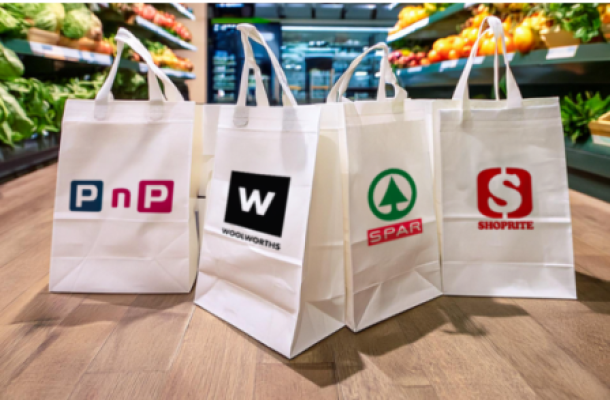These are the foods you will be paying more and less for in 2017
Absa has released its released its Agricultural Outlook for 2017, detailing how various local and international factors will impact the production of food and other perishables in South Africa in 2017.
With the 4-year long drought expected to come to an end in 2017, the industry appears to be more hopeful with regards to production and sell-through in the coming year.
However, external factors such as South Africa’s poor exchange rate and growing import demands could see South African consumers paying more for certain products.
You can find how South Africa’s various food prices will be affected detailed below.
Prices that are going up
Sugar Cane
South African sugar consumption might be under slight pressure due to lower economic growth.
The impact of high food inflation on sugar prices and consumer demand may also affect the demand for sugar as consumers are under pressure. Price increases will be due to lower production estimates.
Citrus (Oranges, Lemons and Grapefruit)
Although the world production in oranges tends to remain flat, domestic sales indicate an expected decline in domestic production.
The weak rand and increased expenditure on food indicates that the demand for oranges will increase. These factors support domestic prices following export prices to a higher level.
Onions
Increased export numbers for onions support higher onion prices as the rand continues to weaken. Contrary to the case of potato prices, the prices for onions do not correlate closely with those of white maize prices, as it is not a vegetable rich in starch.
Onion price movements do not correlate strongly with the value of the rand. However, the demand for onion exports to SADC countries and the rest of Africa has grown substantially over the past seven years.
Beef
The drought resulted in more cows being slaughtered, which will hike prices during the herd rebuilding phase. However, these higher prices will be met by some consumer resistance due to economic pressures resulting from inflation, higher interest rates and reduced net income.
Milk
Producer prices are expected to follow the recent increase in the retail prices for milk.
Unfortunately, producer prices may lag behind for up to six months before catching up. By that time, from May 2017 onwards, feed prices may start to recover and the profitability of milk production will increase.
The local demand for milk will increase further as milk becomes more and more accessible through additional outlets in townships.
Pork
Short-term pressures from higher feed costs on the back of the drought, the weakening of the South African rand against major currencies, unstable water and electricity supplies, increased labour costs and lower poultry prices remain.
Consumers’ reduced disposable incomes, which were met with higher interest rates at the time when pork supplies remained constant, added to the pressure. Prices are expected to climb towards the end of the year
Decrease
Maize
In 2015/16 domestic maize prices were at an all-time high as a result of lower production and the weaker South African rand.
The overall value of maize did not drop that much as the prices for maize compensated for the lower production. A strong rand improved economic conditions.
With the anticipation of El Niño dissipating in the 2017/18 marketing season, white maize prices are expected to return to price levels near import parity.
Potatoes
Given the strong correlation between the white maize price and the potato price, the planting decisions of maize producers are expected to have a significant impact on the production of potatoes.
The prices for white maize in the new season have already declined significantly compared to the maize prices in the previous season. Consequently, the price for potatoes may follow suit from May onwards to trade lower on the domestic fresh produce markets.
Tomatoes
It should be noted that the warm, dry winter favoured the production of tomatoes under irrigation, leading to higher inventories of this perishable product. The volumes produced increased significantly from April 2016 onwards to exceed the average production levels over three years. The subsequent increase in the production of tomatoes impacted directly on prices, causing them to head south.
Eggs and Poultry
A plentiful supply of meat will keep poultry prices low in the medium term. The return of the US to the export market has increased competition while future avian flu outbreaks will continue to disrupt trade.
Poultry producers in South Africa will continue to experience tight margins until feed supplies start to recover in 2017. The imports of lower-cost poultry products will continue while higher-cost poultry products will increasingly benefit from the export trade.
Game
The general decline in prices over the past year is not only the result of demand being under pressure. Auction statistics clearly present a picture of increased quantities being offered for sale at formal auctions.
In other words, the breeding segment of the wildlife industry is facing uncharted territory in that price pressure is being instigated from both the demand and supply side at the same time.
Live game prices are expected to remain weaker (lower) in 2017.
Not much change
Wheat
The long-term outlook for wheat prices points to a sideways movement in international prices as sufficient amounts of wheat are expected to be produced.
Excess wheat supplies are expected to continue into the 2016/17 season, and production is expected to remain steady until 2021.
The rand to US dollar exchange rate is expected to decline moving into 2017, which will add support to future local wheat prices. Given the declines in global wheat prices, domestic wheat prices can be expected to trade at least sideways owing to the efficient tariff measures that are in place.
Sunflower seeds (oil)
South Africa needs about 880,000 tonnes of sunflower seed annually, which should provide enough scope to cultivate 720,000 hectares of sunflower seed.
The lower crude oil price should not have a negative impact on the price of domestically grown sunflower seed or soybean oil.
Vegetable oils in South Africa are refined for purposes of human consumption and receive a premium above vegetable oil for industrial purposes.
Wine
Over the past five years wine grape hectares in South Africa have declined by 1,971 ha as a result of more vines being uprooted than planted. At present 48% of red wine grape varieties are 16 years and older and 44% of white wine cultivars are 16 years and older.
If the current trend of the past five years continues, the vineyards of 73% of red wine cultivars and 54% of white wine cultivars will be 16 years and older. This should result in a decline in production over the medium term.
The continued growth in sales in the local market should reduce pressure on the current high volumes, together with the expected decline in wine production in the future. In the saturated international wine market the US remains a growing high-value market destination. Trade agreements are important to open up and support export markets.
News Category
- International retailers
- On the move
- Awards and achievements
- Legislation
- Wine and liquor
- Africa
- Going green
- Supplier news
- Research tools
- Retailer trading results
- Supply chain
- Innovation and technology
- Economic factors
- Crime and security
- Store Openings
- Marketing and Promotions
- Social Responsibility
- Brand Press Office
Related Articles

Checkers Sixty60 wipes floor with Pick n Pay As...

Top tips for consumers to combat escalating ele...

Clear winner in South African retail battle

Drinks survey reveals Rooibos as a top choice a...
















